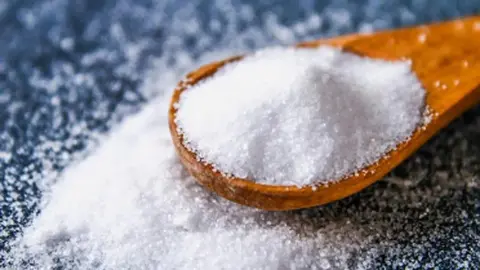Syllabus:
GS2: Issues relating to development and management of Social Sector/Services relating to Health, Education, Human Resources.
Context: Recently, the Union Health Ministry has asked all government departments to prominently display the amount of oil and sugar content on popular Indian snacks, including samosas, vada pav, kachoris, pizzas, and burgers.
More on the News
- Apart from the boards, the Health Ministry has requested that all official stationery — letterheads, envelopes, notepads, folders, etc — and all publications print health messages as daily reminders to reinforce the fight against obesity.
- The move comes just weeks after CBSE instructed its over 24,000 affiliated schools across India to establish ‘sugar boards’, where information is displayed for educating students about the risks of excessive sugar intake.
- Earlier this year, Prime Minister had urged people to reduce oil consumption by 10% and fight obesity.
- The programme aims to strengthen infrastructure, train personnel, ensure early diagnosis, timely referrals, and promote awareness for NCD prevention, the Ministry stated in Parliament.
- Presently, to address the rising burden of NCDs, the Union Health Ministry provides technical and financial support to the States/UTs under the National Programme for Prevention and Control of Non-Communicable Diseases (NP-NCD) as part of National Health Mission (NHM), based on proposals received from States and Union Territories and subject to the resource envelope.
Unhealthy Snacks
- Any snack or food – Indian or Western, homemade or packaged – can be unhealthy if it exceeds the limits of sugar, salt and fat content.
- The focus should be on the nutritional content of a food irrespective of its origin.
- Initiatives of the Health Ministry are a part of a non-punitive, awareness-driven approach to create behavioural nudges and empower consumers to make informed choices
Need of these measures
- These measures are designed to create awareness about the role that diets can play in our health. The goal is to promote moderation, not restriction.
- According to information released by the Health Ministry, India is currently facing an unprecedented rise in non-communicable diseases (NCDs), which account for over 66% of all deaths across the country.
- With the rapidly-changing demographic and epidemiological landscape in the country, the burden of NCDs such as cardiovascular diseases, diabetes, chronic respiratory diseases, and cancers has become a significant public health challenge, particularly among individuals over the age of 30
- These efforts complement government programmes such as Eat Right India of FSSAI, Poshan Abhiyaan, Fit India, National NCDs Control Programme and school health initiatives.
- Excess sodium, added sugars, refined oils, and sugary drinks, often marketed as healthy, can undermine diets and increase the risk of heart disease, stroke, type 2 diabetes, and metabolic issues.
- Many people lack essential nutrients due to low intake of fibre, fruits, vegetables, whole grains, healthy fats, and gut-friendly fermented foods.
- Even functional snacks claiming health benefits can contribute to poor nutrition and health risks.
Calculation of nutrition value for food
- The nutrient values of foods are calculated by conducting laboratory assessments of prepared foods and are represented as a per 100g basis for ease of understanding, taking into consideration total sugar, saturated fat, and salt levels.
- Where lab-based nutrient analysis is not available/feasible, evaluations are based on aggregating the nutritional values of ingredients available in the Indian Food Composition Tables (IFCT) published by Indian Council of Medical Research-National Institute of Nutrition, Hyderabad (ICMR NIN).
- The 2024 ICMR-NIN Dietary Guidelines define High in fat, sugar, and salt foods (HFSS) as those with over 10% of calories from sugar, over 15% from added fats, and more than 625 mg of salt per 100g of solid food.
- HFSS foods stands for high fats, sugar, salt foods, which are usually processed and are typically low in essential nutrients.
- Excessive consumption of HFSS foods can contribute to various health problems, including obesity, diabetes, and heart disease.
Need for salt/sugar on a daily basis
- For adults in India, the recommended daily intake is less than 65g of total fat, less than 25g of added sugar, and less than 5g of salt.
- Limits for children have been set depending on their various phases of development. However, studies have indicated that a significant number of Indians consume higher than recommended amounts of salt.

Source

